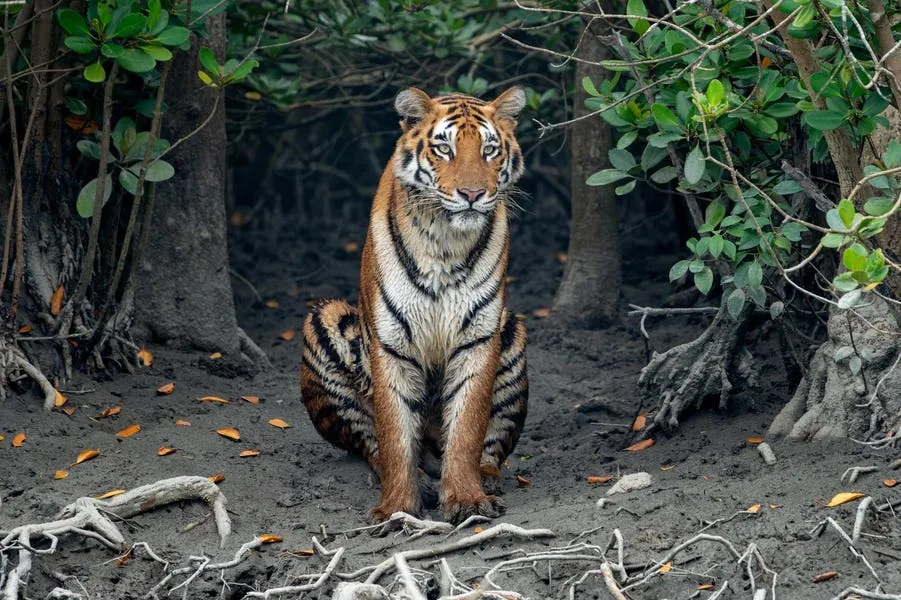Forbes contributors publish independent expert analyses and insights.
While India boasts top-tier wildlife preserves like Ranthambore National Park and Gir National Park, those who venture to the Bangladesh border can find a truly spectacular ecotourism destination in the form of Sundarbans National Park. Established back in 1984, this sprawling preserve measures in at 1,330 square kilometers, serving as a crucial haven for South Asia's native mangrove forests—and in addition to vast swathes of indigenous flora, the Sundarbans are also perfect for encountering a staggering array of creatures both large and small.
While native fauna spans from the northern river terrapin to the Asian small-clawed otter, the park is best known for one animal in particular: the Bengal tiger. While this subspecies can be found across a large portion of South Asia, the Sundarbans population has perfectly adapted to life in the mangroves, providing visitors with an opportunity to marvel at the beasts as they thrive in a unique habitat. Throughout the day, the park's resident tigers can be found paddling through the brackish waters as they search for food—and if you're truly lucky, you might be able to catch a glimpse of the animals in action, with mammals like the chital deer and wild boar serving as prey for the local felines.
Beyond big cats, the murky waters of the Sundarbans play host to a wealth of fish and crustacean species—and this high concentration of biomass serves as the perfect buffet for all sorts of native birds. Waders abound along the many mangroves, with the Asian openbill, painted stork and little egret being just a few of the avian species that can be spotted during a visit, while eye-catching passerines range from the purple-rumped sunbird to the eastern yellow wagtail. And when it comes to raptors, birders can keep their eyes peeled for a wealth of majestic species, with crested serpent eagles, black kites and buffy fish owls all calling the park home.
While the verdant treetops of Sundarbans National Park are brimming with all sorts of birds, visitors can also encounter a wide range of reptiles during a foray into the mangroves. Amidst the many water monitors and garden lizards, guests might catch a glimpse of a snake lounging along the preserve, with resident species spanning from the Russell's viper to the king cobra, a colossal creature that's capable of measuring in at more than five meters in length. However, when it comes to true ferocity, it's tough to beat the saltwater crocodile. While their native range spans from northern Australia to the Tamil Nadu coast, the Sundarbans play host to a particularly large population, providing plenty of opportunities to spot these colossal reptiles in the flesh.
After a few days spent exploring the vibrant food scene and rich culture of Kolkata, Sundarbans National Park is perfect for a deep dive into the India of yore, with the diverse flora and fauna thriving across the region as they have for eons. Whether you're a seasoned birdwatcher, a hardcore herpetologist or just a casual wildlife aficionado, this storied preserve is certain to leave you with lasting memories of the rich beauty of West Bengal and all of its native creatures.
